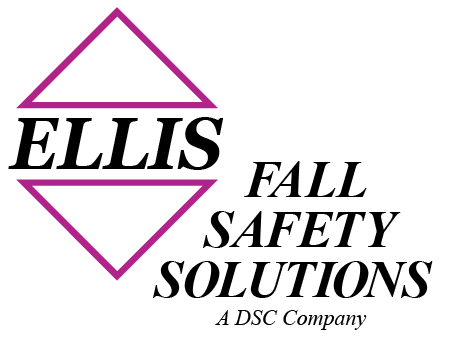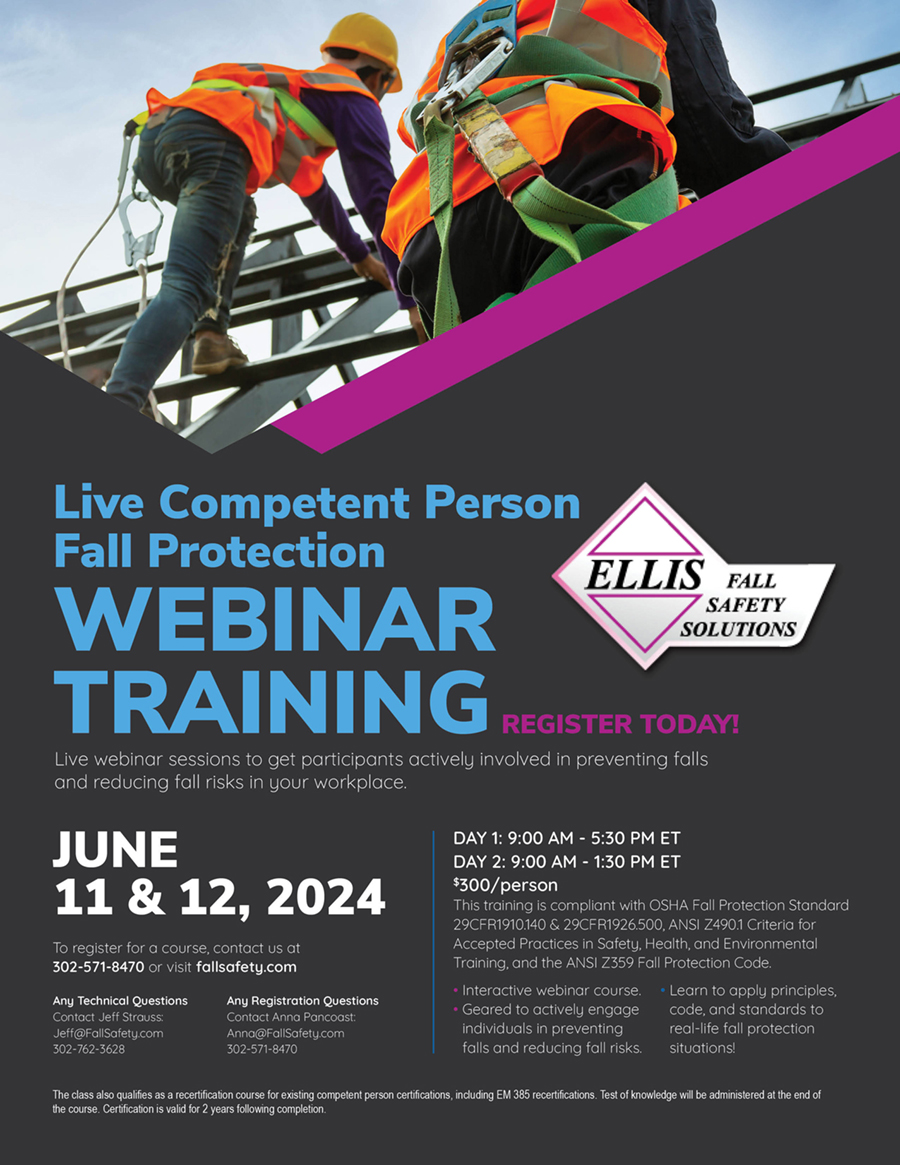Rope Strength. Only approved, synthetic ropes should be used with rope grabs since natural fibers dry out or rot too quickly and because strength loss below 5,000 lbs. in any rope is not obvious. As a guide, periodically pull-test end samples of lifelines, no matter what rope is used.
In the Philadelphia area, the author has found the strength of 1/2 inch nylon twisted ropes degrades by 50% in two years from handling and dirt, although the strength of 5/8 inch ropes degrades more slowly.
See “Introduction to Fall Protection, 4th Edition” page 235.
Order your copy of “Introduction to Fall Protection, 4th Edition” today. This invaluable resource will take you from the structure design stage to post construction maintenance. Click to find out more!

